Crafting Yourself: Mandalas
I've been meaning to do a post about mandalas for awhile, (I even mentioned it back in January), but wasn't sure how I wanted to go about it. I'm glad I waited because I think I've come up with an idea for the blog that's more than just a post on mandalas; but I'd really like your input and feedback on it.
Some of you may not know that I was a psychology major in college. Even though I never found a career in it, I'm still interested in topics on the subject. I also love to write, which I haven't really subjected you to seeing as how I feel posts on crafts tend to be more successful with less words and more pictures. So, as a strong proponent for combining your favorite things, I'm contemplating merging crafting, psychology and writing into a blog series called "Crafting Yourself."
The "Crafting Yourself" series could be a once a month post dedicated to psychology-ish issues in relation to crafts/art, and could even include a tutorial or exercises for participating at home. Perhaps some flickr pools could be set up for sharing. It would be great if the posts could generate some good discussion as well.
I know as a blogger "it's your blog, so blog about what you want," but it's also the readers that make a blog. It's much easier to put in the extra work if other people are just as excited about the content. So, what I'm getting at is this will be like the pilot post. I'd appreciate your feedback, whether it's "yeah, this is an interesting idea" or "meh, you're going to lose my interest and I'll just end skim through the pictures..." Alright, on to mandalas and what my favorite psychologist, (yeah I'm a nerd), Carl Jung thought about them.
The word "mandala" is Sanskrit for "circle." It also refers to paintings and drawings typically with a circle formation that are found cross culturally. For example they can be found in religion and used as meditation aids (remember me talking a little about tantric paintings?) The above sand painting (one of my mom's several sand paintings she's collected) is an example of a mandala found in Native American culture. In addition to mandalas being found on a cultural scale, individuals in times of extreme conflict or distress sometimes have dreams with mandalas or will spontaneous draw or paint them themselves.
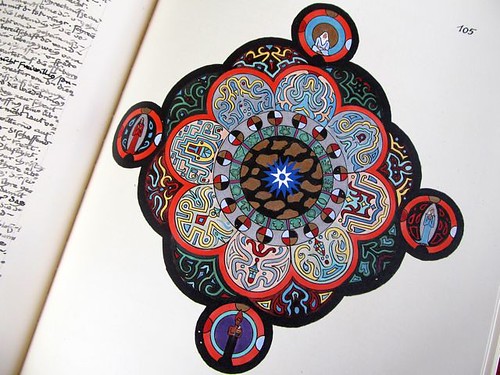 |
| One of Carl Jung's own mandalas in the recently published Red Book. |
Similarities in the images and symbols found in mandalas cross culturally and individually particularly interested Carl Jung as he did a lot of research on archetypes. Archetypes are images, concepts or traits found cross culturally and reside in everyone in what he believed to be the "collective unconscious." In his book Mandala Symbolism, he mentions several recurring symbols in relation to mandala paintings his patients, who were either schizophrenic or under psychic distress, created. These symbols include:
"1. Circular, spherical, or egg-shaped formation.
2. The circle is elaborated into a flower (rose, lotus) or a wheel.
3. A centre expressed by a sun, star, or cross, usually with four, eight, or twelve rays.
4. The circles, spheres, and cruciform figures are often represented in rotation (swastika).
5. The circle is represented by a snake coiled about a centre, either ring-shaped (uroboros) or spiral (Orphic egg).
6. Squaring of the circle, taking the form of a circle in a square or vice versa.
7. Castle, city, and courtyard (temenos) motifs, quadratic or circular.
8. Eye (pupil and iris).
9. Besides the tetradic figures (and multiples of four), there are also triadic and pentadic ones, though these are much rarer." (Mandala Symbolism, pg. 77)
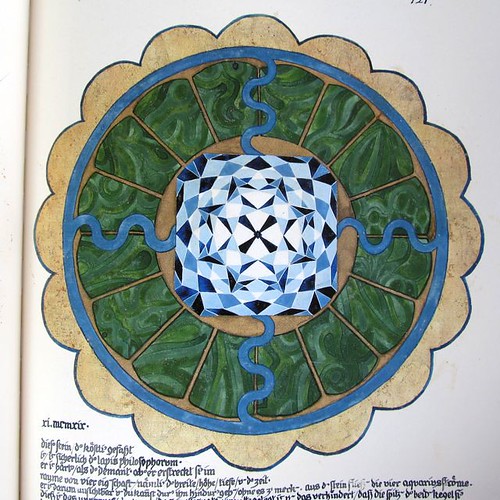 |
| Another of Carl Jung's mandalas from The Red Book. |
Jung believed that creating mandalas was therapeutic because it was a way to create order out of chaos and confusion. He found that several children, whose parents were divorced or in the process of getting divorced, spontaneously created mandalas and were often very attached to them. Because these children were experiencing great amounts of confusion and anxiety, their psyches created these images in order to help protect themselves. I think even just looking at mandalas, especially the symmetrical ones, has a calming and soothing effect.
Mandalas, in addition to being related to his theories on archetypes, are also related to his theory of Individuation. According to Jung, Individuation is the process we go through as we develop ourselves or our personalities, to becoming our best, whole selves. One way in which we go about this is by getting in touch with the part of ourselves that resides in the unconscious. He believed making mandalas (and also using what he called "active imagination"), was one way in which to communicate with our unconscious. Through the symbols and archetypes coming from the unconscious, created in the mandalas, Jung could help decipher a patient's Individuation process.
Perhaps, more simply, we could say that through practicing mandalas on a regular basis, we could watch our psychic transformation day to day. Even through simple shapes and colors it wouldn't be hard to assess and or become aware of our state of mind. To some extent I was able to do this with the mandalas I was drawing. I could make comparisons between how I was feeling and the mandalas I drew. The more optimistic or excited I was feeling, the more details the mandalas would have. The more subdued I was feeling, the simpler the mandalas were. I also noticed that on days I felt creative ideas flowing more easily, the mandalas had a flowery and blooming feel to them.
Even setting aside the idea that making mandalas allows for some sort of subconscious release, I found drawing them just plain relaxing. For making the symmetric mandalas, I made two rules for myself. One, I couldn't make my designs in pencil first. This eliminated the option of erasing. There were no wrong lines so there was no pressure to make it perfect. I always do things in pencil first to fix mistakes, so making something with no worry of mistakes felt nice. The second rule was that I couldn't think. There was to be no planning, only picking a color that felt good and making a shape that felt right. I tend to spend a lot of time on the planning stages of projects, so going on auto pilot and seeing what I come up with was extremely freeing.
It might also be interesting to note that I did little reading on the recurring mandala symbols until recently, which made it fun to look through the mandalas I had done a few months ago and see certain symbols, like circles in squares, the four rayed shapes and even the rotation or swastika symbol in the mandala above. Perhaps that was just a result of having seen other mandalas before, or maybe it was subconscious?
Last week I tried expanding my mandalas by trying some that weren't limited by symmetry. Here are a couple of them:
I really like the colors in this one and perhaps it's demonstrating my current triangle obsession?
I found this one interesting because it was done several days after the previous but with some similarities... However in this one, the two triangles have come together and aren't separated by a barrier.
This one? No idea. Haha, I guess I would need Jung to analyze it for me.
When I pulled out my stack of mandalas to photograph today, I was really surprised to see that the one above from February has the same crescent moon shape underneath the center circle that the mandala above it has under the tear/seed shaped thing... Interesting... Theories? I think the image is very comforting to me, even if I don't understand it!
Here are some more zentangle mandalas:
So do you want to make some mandalas now? I think they are relaxing, meditative and fun. They'd be especially good to make when you're under a lot of stress or life just seems chaotic. You may find it's the perfect way to get back some order and calmness... Or you may just find out something you didn't know about yourself!
Go get your favorite art medium, whether it's paint, colored pencils, markers or whatever. (I love to use my Prismacolor colored pencils!) Let's start with a simple symmetrical mandala:
Get something round to trace your circle, like a small plate or a bowl. (I was at the lake and used a coffee can filled with old nails... Whatever works!) Start with a shape in the center.
Then start to work your way out from the center in a symmetrical manner...
Remember, try not to think too hard. There are no wrong shapes, lines or colors. Just go with your gut.
Keep making your way to the outside... until you've filled in your entire circle.
Now you have a mandala! (You may want to put a date on your mandala like I wish I had done with more of mine.) And hopefully now you know a little bit more about mandalas in relation to psychology if you didn't already before!
Well, if you're still with me, I'd like to hear your thoughts! Should I be preparing a post on the creative genius myth and the creative process for next month? And if you draw some mandalas, I'd love to see them!
Resources:
Mandala Symbolism by C.G. Jung
Images from The Red Book by C.G. Jung (One of my favorite possessions... It was sitting in a vault for 50 years after he died, until his family allowed it to be published in 2009.)
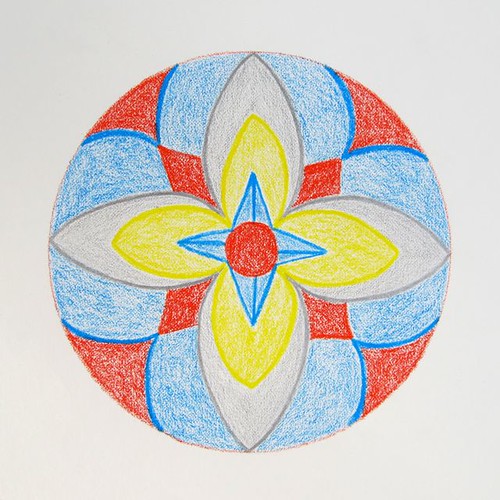
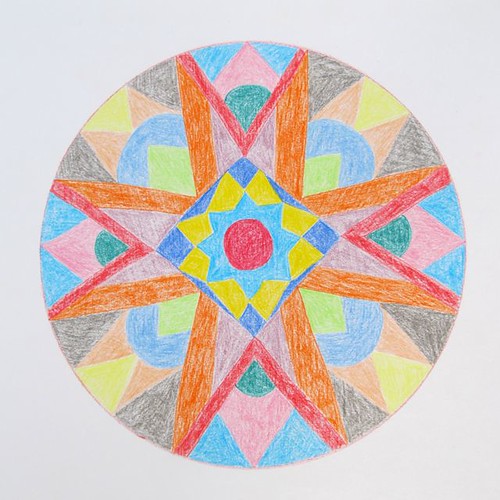
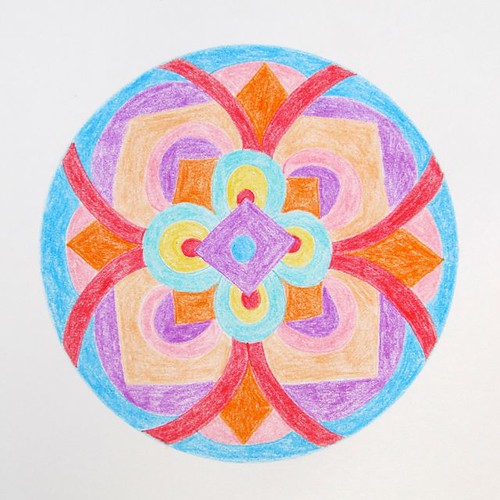


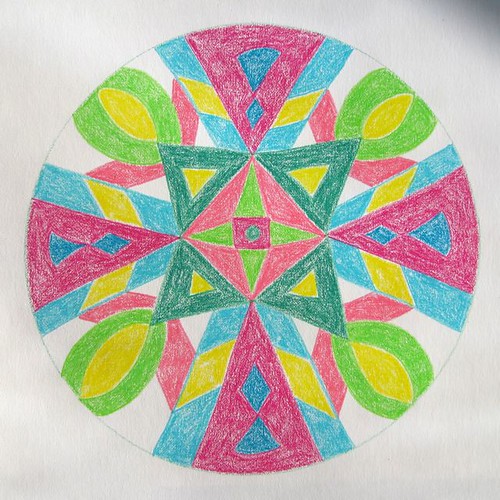

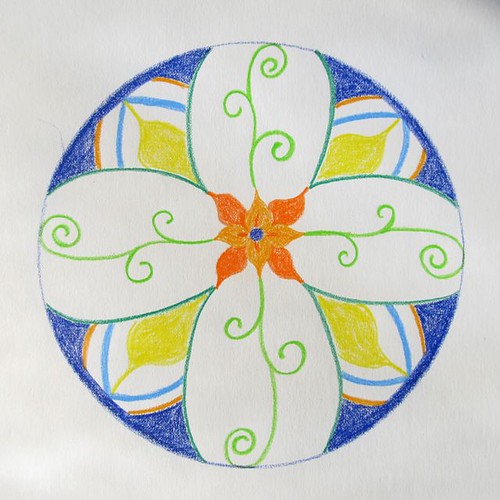

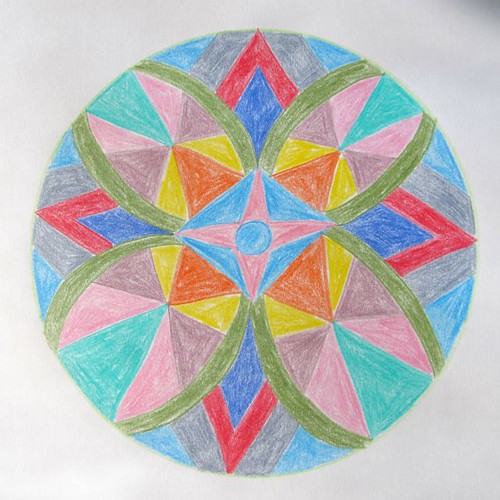

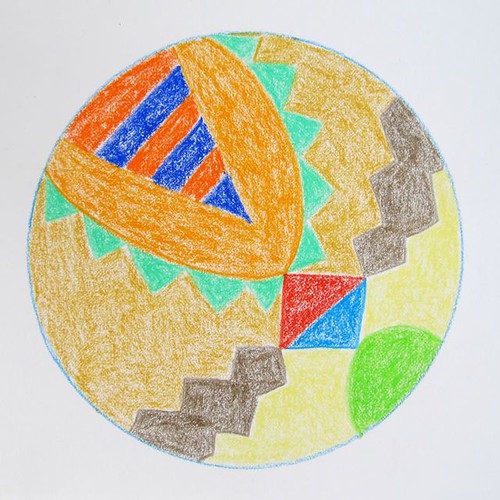


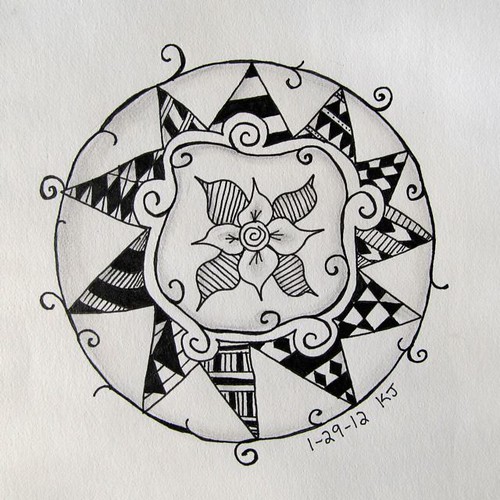
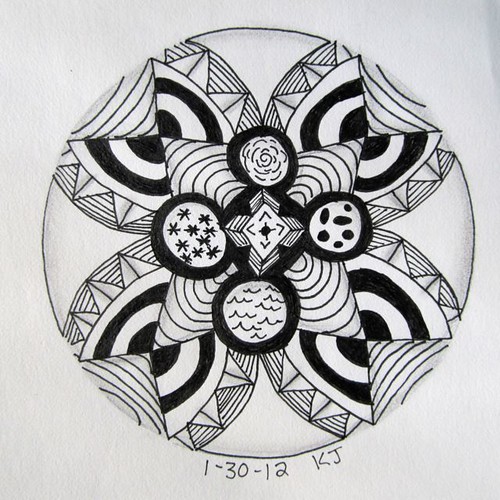

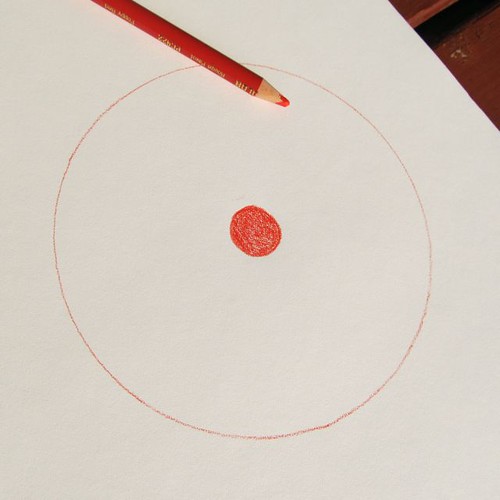




I found this to be a very interesting post. Yes go with your idea..I have done a crochet mandala a just find it peaceful to look at. I am not a blogger just a commenter but ever loyal. Look forward to more on this subject...
ReplyDeleteThank you so much for your feedback! I feel the same way about the crocheted mandalas I've made too, and even about the doilies I've made. I'm beginning to wonder if my doily obsession is related. In a sense, I think they are like mandalas...
DeleteHope you had a lovely weekend,
Kate :}
i've never drew a mandala in my entire life!!! Does it mean something??? some months ago I bought a little book called "Mandala design handbook" and now this post....maybe it's the right moment to draw one!!! I like your idea!!
ReplyDeletexxx Alessandra
Mandalas are very interesting concepts and I've always loved making them, colouring them and crocheting them!
ReplyDeleteI will have to come back to this very long posting when I have more time to read it all!!! Now I have to get ready to walk down to the lake to catch the morning light and have breakfast down there!
I'll give you more feedback when I find the right amount of time! Sandra
I'm a big nerd too, so I'm total game for this series! My dad is actually a professor of psychology. That made for an interesting childhood enrolled in a lot of development experiments... lol! We got free Happy Meals afterwards, so it was awesome!
ReplyDeleteI never thought of the psychological link to mandalas before... probably because nobody dares touch a lengthy 'nerdy' subject on the internet. Maybe Mandalas are the next ink blot test... hmmmmm....
I think this series sounds like a great idea - I think it would be really interesting.
ReplyDeleteMandalas are great! Well, just colouring-in is great too!!! I sometimes HAVE to colour in with the kids at school.. You know..... just to show the kids what to do! ;-)
Carly
x
This was so interesting, Kate! We must be on the same wavelength ... I have been obsessed with mandalas since the CAL and have been drawing them too!
ReplyDeletehi kate, now it all makes sense! the zentangles indicated an interest in psychology I think. this was interesting to read and i will tell you that my little boy who has been with me for 5 months is obsessed with circles. he obviously has had a stressful little life and i wonder if you've given me a tool to help him. i think we'll have some time drawing mandalas together along with his sister too. thanks kate!
ReplyDeleteGood too see another on the journey!
ReplyDeleteBruce
http://fourcircles.org
Nice to "meet" you Bruce! I just took a peek at your website, and look forward to exploring it more! Thanks for sharing!!
DeleteKate :}